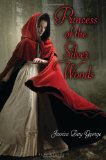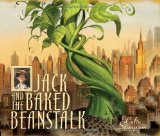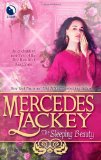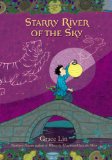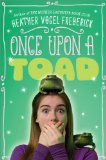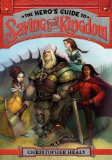Review of The Hero’s Guide to Storming the Castle, by Christopher Healy
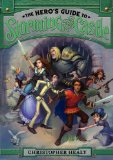 The Hero’s Guide to Storming the Castle
The Hero’s Guide to Storming the Castle
by Christopher Healy
with drawings by Todd Harris
Walden Pond Press, April 30, 2013. 479 pages.
Starred Review
I’m so happy to get my hands on the sequel to The Hero’s Guide to Saving Your Kingdom. Here’s more of the same: Silly, adventurous fun.
Yes, you should read these books in order. The first book tells you all about the Princes Charming, who aren’t named in their respective fairy tales. The author makes it very clear this is a second book right on the first page:
Now, you may be asking yourself, Who is this Prince Duncan, and what makes him such an expert on heroes? To which I will respond by saying that perhaps you may have skipped a book on your way to this one. You should probably check on that.
In this book, the selfish, cruel, and calculating Briar Rose blackmails her Prince Charming, Liam, into finally marrying her and getting the league of heroes to recover his family’s sword from the castle of the Bandit King. Hence the name, as the main action involves storming the castle to get that sword.
The plot, as before, is convoluted and full of setbacks, adventure, and silliness. The characters are colorful and cartoon-like. Although adults of marrying age (except the Bandit King), they are quite childlike in their motivation.
But it’s all in good fun. Here’s a random chapter beginning to give you the flavor:
The four princes, along with Ella and Briar, sat at the round table in Avondell’s War Room, waiting for a report from Smimf. Only one day had passed since the League of Princes sent the young messenger to Rauberia armed with a fake advertisement that would serve as his excuse for getting inside the castle gate (“SPECIAL DEAL FOR NEW MONARCHS! HALF-PRICE CROWNS! FREE ESTIMATES ON RESIZING!”), and already he had returned. He stood at attention before the group, loosened his scarf, and hiked up his shorts.
“What did you find out?” Liam asked.
“Well, I found out that the king is not interested in purchasing a new crown unless he can get at least seventy-five percent off,” said Smimf.
“What did you learn about the castle?” Liam more specifically inquired.
As with the first book, the story went on a bit long for my personal taste, but again I don’t think that will be an obstacle for kids who are once hooked. It reminds me of a Disney cartoon, with simplistic emotions, a convoluted plot and lots of gags. But in a good way! The illustrations perfectly fit that feel. I think that, like the first book, this one would make a good classroom read-aloud. It’s light-hearted and fun, even if as an adult reader, I get a little tired of the juvenile humor after awhile.
And there’s a larger plotline slowly building. We do have the sense that most of the princes weren’t necessarily paired with the right princess in their respective fairy tales. And the ending gives an ominous note of danger ahead. We know our bumbling heroes will be required to save the day.
The Hero’s Guide to Saving Your Kingdom is a Summer Reading Program selection for our library system. I’m looking forward to booktalking it in the schools at the end of the year, and especially telling the kids that if they like the first book, there’s more fun in store for them.
Yes, it’s silly. Yes, the characters are somewhat cartoon-like. Yes, it goes on a bit long for me. But the fact is, these books are well-written. The plot is coherent, the characters are truly charming, and they’re up against high stakes, which they plausibly overcome, even with all their shortcomings. You can’t help but root for these guys. And I can’t help but want to find out what happens next.
christopherhealy.com
harpercollinschildrens.com
Find this review on Sonderbooks at: www.sonderbooks.com/Childrens_Fiction/storming_the_castle.html
Disclosure: I am an Amazon Affiliate, and will earn a small percentage if you order a book on Amazon after clicking through from my site.
Source: This review is based on an Advance Review Copy sent to me by the publisher.
Disclaimer: I am a professional librarian, but I maintain my website and blogs on my own time. The views expressed are solely my own, and in no way represent the official views of my employer or of any committee or group of which I am part.
Please use the comments if you’ve read the book and want to discuss spoilers!
